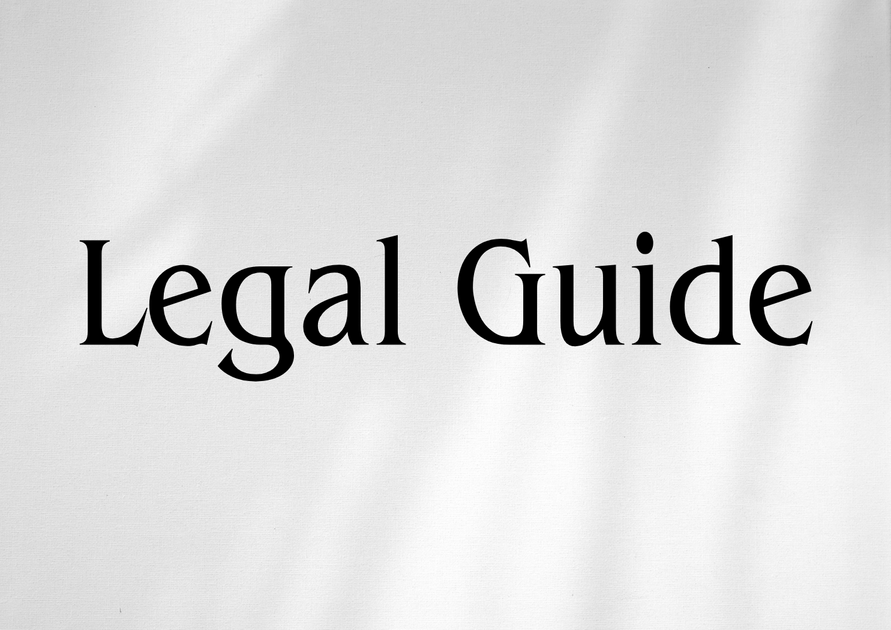Introduction: Banking Disputes in the UAE Legal Landscape
In recent years, the United Arab Emirates (UAE) has witnessed significant transformations in its banking and financial regulatory framework. These developments, driven by Federal Decree-Law No. (14) of 2018 on the Central Bank and Organization of Financial Institutions and Activities and subsequent Cabinet Resolutions, have fundamentally reshaped the way banking cases are handled within the country’s judicial system. With the growing sophistication of the UAE’s financial sector—and the government’s drive to align local laws with international standards—banking disputes now require a nuanced understanding of both regulatory and procedural dimensions.
The importance of this subject cannot be overstated. For businesses, executives, HR managers, and legal practitioners operating within the UAE, navigating banking disputes is not merely a matter of enforcing contractual rights or defending interests. It encompasses strategic risk management, compliance obligations, and a careful reading of recent legal updates relevant in 2025. Failing to adhere to the appropriate procedures can result in costly litigation, reputational harm, and regulatory sanctions from bodies such as the Central Bank of the UAE or the UAE Ministry of Justice. This article provides an in-depth, professional analysis of how to effectively file a banking case in UAE courts, referencing the latest regulations, and offering strategic recommendations to ensure success and compliance.
Table of Contents
- Overview of UAE Banking Laws and Judicial Structures
- Key Legislation and Regulatory Updates
- Types of Banking Cases Recognized by UAE Courts
- Preparing to Initiate a Banking Dispute
- Filing Procedures and Requirements
- Expert Evidence and Technical Reports in Banking Cases
- Comparative Analysis: Old Versus New UAE Laws
- Case Studies and Practical Scenarios
- Risks and Compliance Strategies
- Conclusion: Strategic Takeaways for Legal and Business Leaders
Overview of UAE Banking Laws and Judicial Structures
The Building Blocks: Federal Courts, Specialised Tribunals, and DIFC Courts
The UAE’s legal landscape is characterized by a dual-court system comprised of onshore (federal and local courts, including the banking circuit within the Court of First Instance) and offshore (Dubai International Financial Centre Courts) jurisdictions. The vast majority of banking cases are heard within federal courts, applying UAE civil and commercial laws as set out in Federal Law No. (5) of 1985 (the Civil Code), Federal Law No. (18) of 1993 (Commercial Transactions Law), and the aforementioned Federal Decree-Law No. (14) of 2018.
Certain high-value or cross-border disputes may fall under the jurisdiction of the DIFC Courts, which operate under an independent English-language common law framework. However, unless the bank or parties are DIFC-registered, and there is a specific jurisdiction clause, clients generally proceed via the UAE’s ‘onshore’ judiciary.
Recent Judicial Reforms Relevant to Banking Cases
Following the issuance of Cabinet Resolution No. (57) of 2018 (as amended), substantial reforms have enhanced digital access to courts, clarified the classification of commercial disputes, and introduced specialist circuits for banking cases. This follows the Central Bank’s 2020-2025 strategic plan for financial sector regulation and dispute resolution.
Key Legislation and Regulatory Updates
The Core Framework
| Law/Decree | Relevance to Banking Disputes | Official Source |
|---|---|---|
| Federal Decree-Law No. (14) of 2018 | Regulates financial institutions, central bank powers, compliance requirements | Central Bank, Federal Legal Gazette |
| Federal Law No. (18) of 1993 | General provisions on commercial transactions including banking contracts and loan recovery | UAE Ministry of Justice |
| Cabinet Resolution No. (57) of 2018 (as amended 2023) | Procedures for filing and hearing civil and commercial cases | UAE Government Portal |
| Central Bank Circular No. 24/2019 | Customer due diligence, anti-money laundering standards, requirements for disclosure | Central Bank of the UAE |
| Federal Law No. (20) of 2018 | Anti-Money Laundering and Combating Financing of Terrorism | UAE Ministry of Justice |
2025 Regulatory Trends
The UAE government has increased its focus on transparency, stronger financial consumer protection, and alignment with FATF (Financial Action Task Force) recommendations, impacting both litigation procedures and evidentiary requirements in banking cases.
Types of Banking Cases Recognized by UAE Courts
1. Loan and Mortgage Disputes
These include claims for non-payment, recovery of outstanding loans, seizure of mortgaged property, and restructuring agreements. Under Federal Law No. (18) of 1993 and the Central Bank’s guidelines, all banking facilities must be backed by enforceable agreements, with particular attention to interest rate disclosures and Shariah compliance where applicable.
2. Cheque and Payment Disputes
The UAE’s recent decriminalization of bounced cheques (following Cabinet Decision No. (5) of 2021 amending Federal Law No. (18) of 1993) has repositioned cheque-related cases primarily as civil claims. Banks and corporate clients must now pursue such matters through compensation or execution proceedings rather than criminal prosecution.
3. Fraud, Misrepresentation, and Cybercrime
Given the rapid growth of digital banking, disputes involving allegations of unauthorized transactions, mis-selling, and data breaches are becoming more prominent. Federal Decree-Law No. (34) of 2021 on combatting rumors and cybercrimes and Federal Law No. (20) of 2018 on AML/CFT are especially relevant to these cases.
4. Regulatory and Compliance-Related Claims
Disputes may involve breaches of anti-money laundering obligations, improper account closure, errors in reporting to the Al Etihad Credit Bureau, and compliance failures under Central Bank Circulars.
5. Investment and Derivatives Disputes
Many disputes concern failed investment products, margin calls, and derivative instruments governed by the UAE Securities and Commodities Authority (SCA) and the Central Bank.
Preparing to Initiate a Banking Dispute
Internal Assessment and Pre-Filing Considerations
Prior to approaching the courts, it is critical for organizations and individuals to rigorously assess their factual and legal position, ensuring the following:
- Collect all banking agreements, account statements, and correspondence supporting the claim.
- Review compliance with Central Bank regulations, especially customer identification and disclosure requirements.
- Attempt amicable settlement or mediation, particularly as courts may require evidence of negotiation—as per Article 62 of Cabinet Resolution No. (57) of 2018 (as amended 2023).
- Evaluate potential counterclaims, including for wrongful action by the bank or customer.
Documentation Checklist
| Document | Purpose |
|---|---|
| Bank facility agreement | Proof of contractual terms |
| Statement of account | Evidence of transactions and outstanding debts |
| Notices/demand letters | Demonstrate attempts at settlement |
| Official correspondence with regulator | Evidence of regulatory compliance/non-compliance |
| Expert reports (if obtained pre-litigation) | Technical support for case |
Filing Procedures and Requirements
Where to File: Jurisdiction and Venue
Banking cases must be lodged in the court of the defendant’s domicile or where the contractual obligation was to be performed, in accordance with Articles 30–32 of the UAE Civil Procedures Law. For disputes specifically involving banks, the claimant can file in the court where the bank branch holding the account is located or where the contract was executed.
Step-by-Step Filing Process
- Statement of Claim: Drafted in Arabic (official court requirement) and electronically submitted via the Ministry of Justice’s e-services portal. The claim must detail facts, legal grounds, and specific relief sought.
- Supporting Documentation: All evidence and supporting documents must be translated into Arabic (where necessary), notarized, and attached to the submission.
- Payment of Court Fees: Court fees are assessed based on claim value (generally 5–7.5% of the claim, subject to minimum and maximum limits).
- Summoning of Defendant: The court serves notice to the defendant bank or customer, who is then afforded time to file a statement of defense.
- First Hearing: The court schedules an initial hearing (typically within 10–30 days). Urgent matters, such as interim injunctions on asset disposal, can be addressed through fast-track procedures.
- Evidence Stage: Both parties present evidence; the court may appoint a banking expert or panel, notably for technical issues.
- Judgment and Enforcement: The court issues a judgment, which can be appealed to the Court of Appeal and (in limited circumstances) the Court of Cassation. Enforceable judgments are implemented through the Execution Court.
Suggested Visual: Banking Case Process Flow Diagram
Placement suggestion: Include a diagram tracing steps from initial claim submission to final enforcement, with estimated timeframes for each stage (e.g., Pre-filing: 2–4 weeks, Court of First Instance: 4–8 months, Appeal: 3–6 months, Enforcement: Varies).
Expert Evidence and Technical Reports in Banking Cases
The Role of Expert Banking Opinion
Due to the specialized nature of banking disputes (such as interest calculations, defaults, or regulatory breaches), Article 69 of Federal Law No. (18) of 1993 empowers courts to appoint expert accountants or banking professionals. The expert’s role is to clarify technical questions, audit bank records, or analyze discrepancies—often pivotal in high-value cases.
Best Practices When Dealing with Court-Appointed Experts
- Ensure early identification of technical issues requiring expert input.
- Prepare concise, targeted questions for the court to direct to the expert.
- Challenge or supplement technical findings through your own independent expert reports, where justified.
Visual/Table Suggestion: Expert Report Checklist
| Checklist Item | Purpose/Action |
|---|---|
| Define scope of inquiry | Prevent irrelevant or excessive expert costs |
| Review expert credentials | Ensure appointed expert has sector-specific experience |
| Submit objections to preliminary findings | Protect client position, correct errors swiftly |
Comparative Analysis: Old Versus New UAE Laws
The last five years have seen a paradigm shift in banking dispute resolution. The adoption of UAE Law 2025 updates, along with ongoing amendments, demands that organizations and practitioners review legacy approaches to banking litigation and compliance strategy.
Key Comparisons: Summary Table
| Aspect | Pre-2021 Regime | 2021–2025 Regime |
|---|---|---|
| Bounced cheques | Primarily criminal; imprisonment and fines common | Decriminalized; primarily civil liability and damages |
| Expert evidence | Appointed ad hoc, limited guidance on scope | Greater court oversight, sector-specific panels introduced |
| Electronic filings | Primarily in-person at court registries | Mandatory e-filing for vast majority of claims |
| Consumer protection | Fragmented, bank policies driven | Central Bank-led guidelines and mandatory disclosure |
| AML/CFT litigation | Limited private enforcement | More frequent private claims, wider regulatory investigations |
Case Studies and Practical Scenarios
Case Study 1: Loan Default by SME Borrower
Scenario: An SME is sued for defaulting on a corporate loan. The bank provides the original facility agreement and account statement. The borrower alleges miscalculation of interest rates and overcharged penalties.
Strategy and Outcome: The court appoints a banking expert to calculate the outstanding debt, scrutinizing the basis of interest and penalty calculations in light of Central Bank Circular No. 24/2019. The expert finds overcharging due to compounding interest beyond agreed-upon contract terms. The judgment orders recalculation and partial reduction of the claim, preserving the enforceability of the balance.
Case Study 2: Civil Claim for Bounced Cheque
Scenario: Following a business dispute, a client issues a cheque that is subsequently dishonored. The recipient files a civil claim, seeking damages and enforcement.
Strategy and Outcome: As per recent laws, the matter proceeds as a civil case. The court examines the underlying transaction and directs enforcement against available assets. The claimant avoids criminal proceedings but secures expedited civil recourse.
Case Study 3: Alleged Cyber-Fraud in Digital Banking
Scenario: A business customer alleges losses due to unauthorized online transfers. The bank contests the claim, citing customer negligence in security credentials.
Strategy and Outcome: Relying on Federal Decree-Law No. (34) of 2021, the court reviews security policy compliance, examining technical logs and guidance from the Central Bank. The judgment apportions liability based on each party’s adherence to best cybersecurity practices.
Risks and Compliance Strategies
Litigation Risks: Financial and Reputational Impact
- Incorrect Procedures: Filing in the wrong court or omitting key documentation can result in dismissal or significant delays.
- Regulatory Reporting Failures: Non-compliance with AML, KYC, or reporting rules can trigger regulatory investigations and punitive administrative actions from regulators.
- Reputational Damage: Negative judgments, especially in publicized disputes, can erode trust with stakeholders and commercial partners.
- Cost and Timeline Inflation: Technical disputes may require multiple expert reviews, driving up legal costs and prolonging resolution.
Compliance and Risk Mitigation: Best Practice Strategies
| Compliance Strategy | Rationale |
|---|---|
| Implement rigorous KYC/AML protocols | Reduce exposure to claims of regulatory breach |
| Review and update banking agreements | Ensure compliance with latest consumer protection requirements |
| Maintain detailed records | Support litigation and dispute resolution workflow |
| Engage specialist counsel and experts | Navigate evolving regulations, safeguard interests |
| Monitor official sources for legal updates | Proactive compliance reduces litigation risk |
Suggested Visual: Compliance Audit Checklist
Placement suggestion: Include a clear, bullet-point compliance checklist summarizing AML, reporting, and contract review requirements for banks and large corporate clients.
Conclusion: Strategic Takeaways for Legal and Business Leaders
Navigating banking cases in UAE courts has never demanded greater diligence or specialist insight. The 2025 legal updates, alongside the proactive regulatory stance of the Central Bank and Ministry of Justice, require that organizations, banks, and practitioners continuously refine their litigation, compliance, and risk management frameworks. The decriminalization of certain cheque offences, emphasis on technical expert evidence, and digital transformation of court processes mark a new era in banking dispute resolution.
To remain competitive and legally secure, clients should:
- Integrate legal review of all banking agreements and practices with reference to the latest federal regulations.
- Adopt sector-specific compliance strategies, with proactive monitoring of regulatory guidance and court procedures.
- Invest in training and upskilling legal and compliance teams to manage emerging issues in digital banking, AML, and consumer protection.
- Engage legal counsel with proven banking litigation expertise for both preventive advice and representation in disputes.
As the UAE courts and regulators continue to adapt to international best practices, only those who embrace a forward-looking, compliant approach will mitigate risks and capitalize on the efficiency and fairness of the modernized judicial system.




